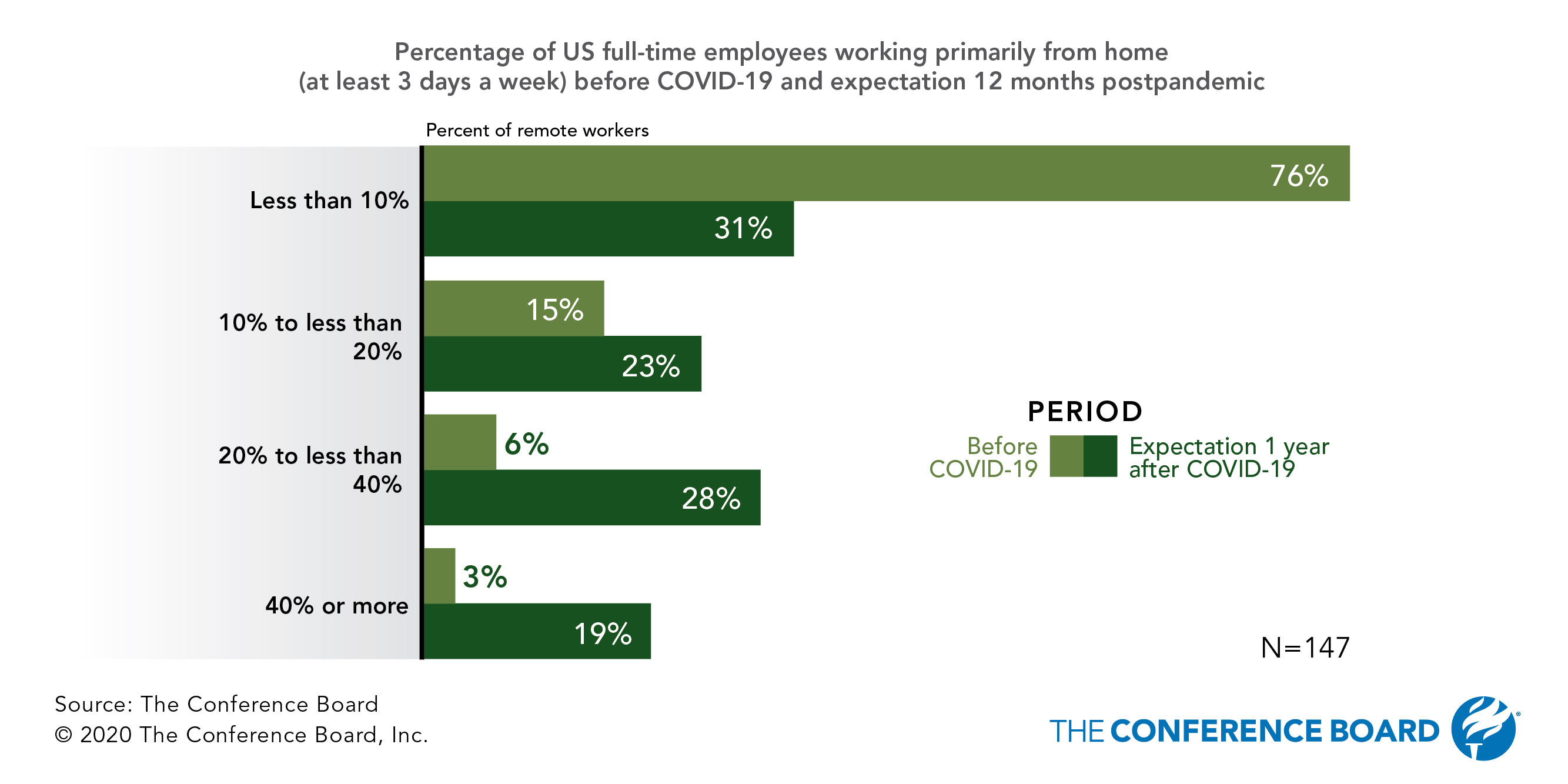|
|
|
While only a fifth of respondents expect 40 percent or more of
their workers to be primarily remote long-term, employers should prepare for
more remote working, more of the time. Almost 70 percent of respondents
believe at least 1 in 10 of their employees will be working primarily from
home 12 months after the pandemic.
An increase in remote work could have large impacts on the
rest of the economy, especially for businesses located in city centers. As
more employees work from home, they may spend less time in city centers.
Consumer spending, especially on food services, may shift from city centers
to the places where people live. Demand for housing and office space could
also shift away from city centers.
For more HC COVID-19 survey results, see From Immediate Responses to Planning for the Reimagined
Workplace: Human Capital Responses to COVID-19
For more information about leading remote worker, see Human Capital Management during COVID-19: Leading Virtual Teams in a Crisis For more information about the rise in remote work, see our blog, " If staying home comes to stay: the rise of telework and the decline of city centers," April 15, 2020. |
|
Stay Informed
COVID-19 Pandemic Resources & Support for HC Community Curated
Resources Hub. The Conference Board is uniquely positioned to
provide the Human Capital Leaders with a 360° view of implications for
business and insights on what’s ahead related to the COVID-19 Coronavirus.
Visit this page often as new resources are being added to help you
effectively and confidently navigate this quickly evolving situation.
|

No comments:
Post a Comment